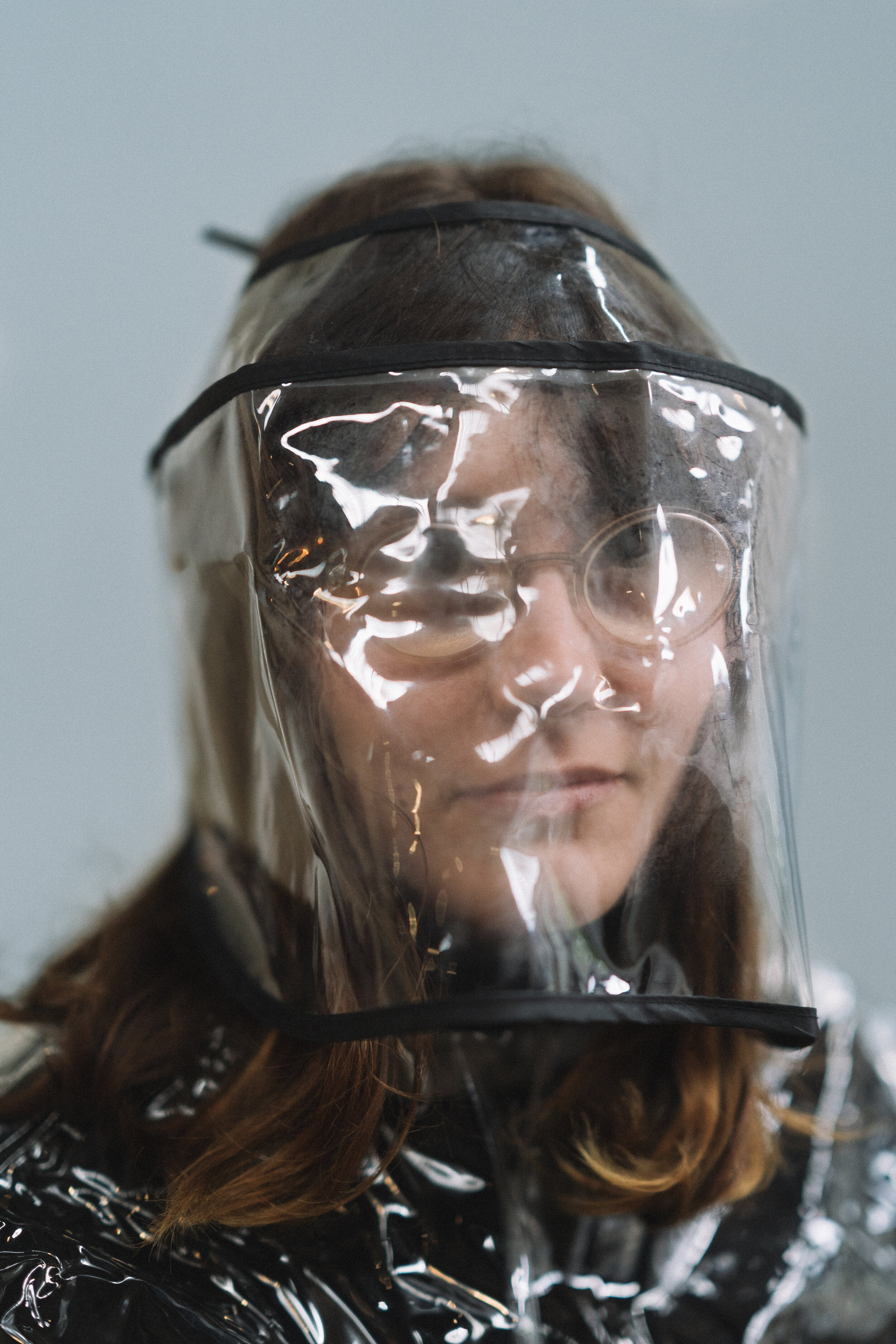An Act Of Intimacy
BY RUBY DONOHOE
Performed September 2020
Photos by Jorge Serra ft Younghee Park & Ash Djokic
An Act of Intimacy was a one-on-one participatory performance exploring the politics of encounter. In a time where we are so practiced in our solitude and so practiced at our distance, what does it mean to be intimate?
“In fact, intimacy relies on separation”
Covid undeniably dispels the myth of the sovereignty of the self - our interconnection is increasingly beyond doubt- and yet our survival also relies on our isolation. Our capacity for autonomy is suddenly vital to the collective in a way few of us have experienced in our lifetimes before now. Mirroring this paradox of simultaneous radical intimacy and radical alienation, An Act Of Intimacy was an invitation to reimagine the porous divide between connection and separation.
As the artist, I chose the performance site.
Both participant and myself agreed upon a time.
And, for the work itself, participants proposed an act of intimacy for us to undertake together.
Participants were free to suggest any act- anything from holding one another to cutting one another’s hair to taking a nap to changing the bandage on a wound to sharing a cigarette out the window to whatever felt right for them.
“The work relies on my personhood not my commodification.”
Before we met, participants were given an audioscape meditating on the nature of intimacy in all its elusiveness and all its forms. This audioscape then led them to a space that was empty aside from two plastic head-to-toes suits. This is where we first met one another.
The intention behind the audioscape was to create an insular environment that invited sensitisation - to self, to environment, to body- as a way of supporting participants to fully arrive within the work. Creating this holding-zone moment of privacy felt essential. Establishing relationship with ‘self’ prior to introducing the idea of relationship with ‘other’ seemed like the only place to start. Both participant and myself wore head-to-toe transparent plastic suits. Covid made the suits a practical necessity but they came to signify another necessity. That, in fact, intimacy relies on separation. The suits created a stronger impulse and willingness towards meeting one another as they offered the safety of a stable point of division. This state of coexistence- as opposed to collapsing into one another or conversely a repulsion away- became transformative.
“…a complex, utopian act.”
At first, the suits were a little complicated to get on and move around in. They took some time to get used to. Just as we both took some time to get used to one another. They presented a very literal question of ‘How do I do this?’ that we each had to answer on our own. How do any of us navigate intimacy?
Moments of awkwardness that may arise - moments that require negotiation - became conducive to a de-masking process that often allowed trust to settle. The suits made us both very aware of our human surface. There was a small amount of body heat and static generated in the suit which increased awareness of the peripheral space around the body. This extra layer of sensorial information created a small shift in attention which supported enough estrangement for a simple human exchange to be visited anew, seen in a different light.
The participants and myself entered the space from different doors at the same time. The rationale was that this would counter the sense that they were entering my territory and, ideally, equalise the power dynamic between us.
Creating a ‘neutral’ performance site seemed important so that I wasn’t pre-determining the tone of the encounters and so that the culture of the space could emerge mutually between us. The problematics, of course, lie in the impossibility of ‘neutrality’. An unresolved aspect of the work was the intention to create a space that felt as safe for one person as any other to explore intimacy. However, a duty of care is not ‘solved’ by the imaginary possibility of a clean, blank slate. My experience of the politics of space could not be separated from the process I was pursuing.
Minimalism is not neutrality- despite what our white, cis, hetero, art historians tell us.
Nonetheless, I did end up presenting the work in a large, industrial, empty warehouse.
No, I know. Uhuh. Yup. I’m aware.
“I becomes a performance site.”
Of course, intimacy relies on the personal.
The work relies on my personhood and not my commodification.
And yet, the reality can’t be ignored that as an artist I am still bound by the realities of providing a cultural product- a transactional service engineered through a specialised skillset.
Emotional labour is still labour. Its politics and the historical precedents of who this work is done by and for whom can’t just be left at the door.
Making room for both ‘self’ and ‘artist’ to exist within this work became a complex, utopian act.
How, when inviting intimacy, do you navigate consent- especially in a constructed context like this? How do you navigate any difference in ethics? Whilst still engaging with my contract to facilitate an art experience, what are my commitments if the proposed conditions for intimacy diverge from ones that I would otherwise disengage from in my personal life? How legitimate is it for a participant to purely want to push my limits as the artist? What does legitimacy have to do with anything? What are the edges of the work? Where are its boundaries? When is the work no longer the work?
I still don’t have the answers to all those questions.



